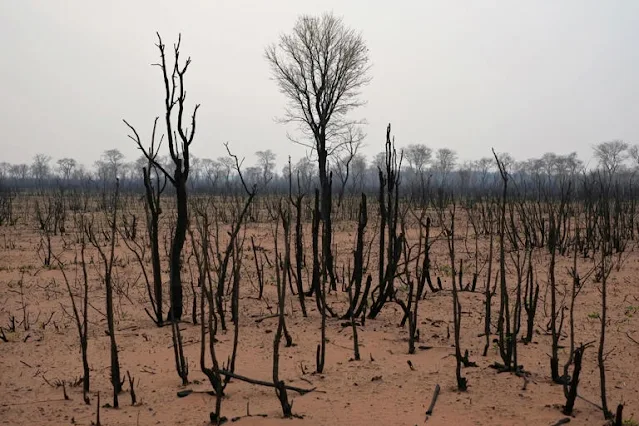The destruction of the world’s most pristine rainforests continued at an alarming rate in 2023, despite significant reductions in forest loss in the Brazilian and Colombian Amazon regions, new data reveals.
An area nearly the size of Switzerland was cleared from previously untouched rainforests last year, totaling 37,000 sq km (14,200 sq miles), according to figures compiled by the World Resources Institute (WRI) and the University of Maryland.
This translates to a rate of deforestation equivalent to 10 football pitches every minute, often driven by the expansion of agricultural land globally.
While Brazil and Colombia reported substantial drops in forest loss of 36% and 49% respectively, under the environmental policies of presidents Luiz Inácio Lula da Silva and Gustavo Petro, these gains were offset by significant increases in forest loss in countries like Bolivia, Laos, Nicaragua, and others.
Canada also experienced record-breaking forest loss due to fires, losing more than 8 million hectares (20 million acres).
Mikaela Weisse, director of Global Forest Watch at the WRI, commented, “The world made some progress but also took steps backward in terms of forest loss last year.
While we've seen steep declines in the Brazilian Amazon and Colombia, the increasing forest loss in other regions has largely nullified this progress. It's crucial that we learn from countries that have successfully slowed down deforestation.”
Changes in land use, including deforestation, are the second-largest source of greenhouse-gas emissions and a major driver of biodiversity loss.
The preservation of rainforests is essential to limit global warming to 1.5°C (2.7°F) above pre-industrial levels, according to researchers. However, the continued deforestation means that governments are significantly off-track in meeting their climate and biodiversity goals.
At the Cop28 climate conference in Dubai, governments agreed on the urgent need to halt and reverse the loss and degradation of forests by 2030, following a commitment made by world leaders at Cop26 in Glasgow to end forest destruction within this decade
Despite Brazil having significantly slowed its rate of forest loss, it remains one of the top three countries for losing primary rainforest, along with the Democratic Republic of the Congo and Bolivia, accounting for more than half of the total global destruction.
Bolivia, in particular, recorded a major surge in forest loss for the third consecutive year, largely due to the expansion of soya farming. Laos and Nicaragua also lost significant portions of their remaining untouched rainforest in 2023, clearing 1.9% and 4.2% respectively in just one year.
In Laos, the expansion of agriculture is being driven by demand from China for commodities, while in Nicaragua, the main causes are cattle ranching and expanding agriculture.
Despite the lack of overall progress in 2023, researchers believe that the world can learn from the examples set by Brazil and Colombia to meet deforestation targets.
Professor Matthew Hansen, a remote sensing specialist at the University of Maryland's geography department, proposed a compensation fund for conserving standing rainforests as the most effective way to maintain them.
He mentioned Germany's 'Fair Deal,' which aims to pay rainforest countries for conserving their forests. Norway has also engaged with Gabon in a similar manner, using carbon sequestration as a measure.
He suggested that coupling this approach with robust governance and civil society engagement could lead to success.

